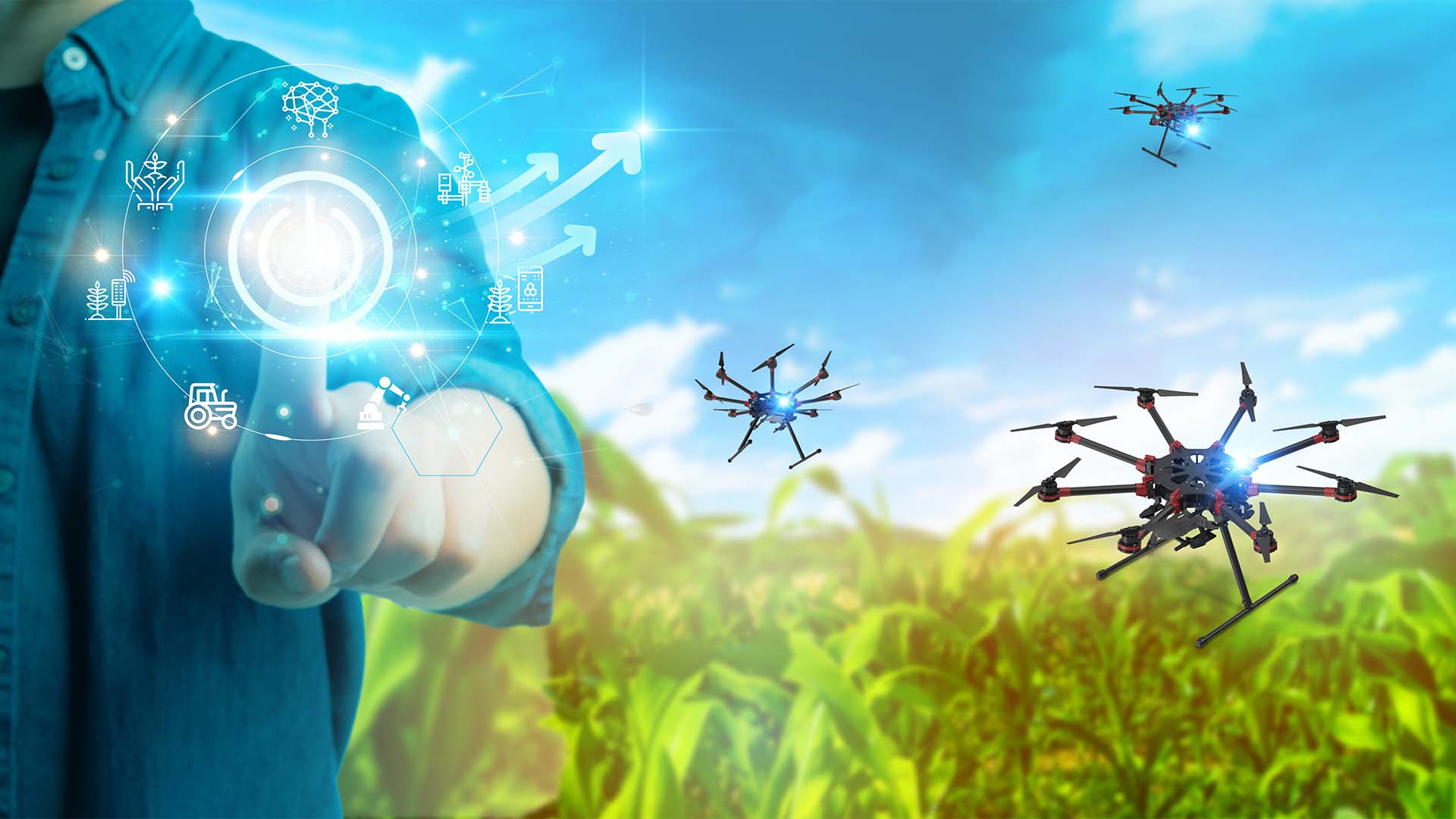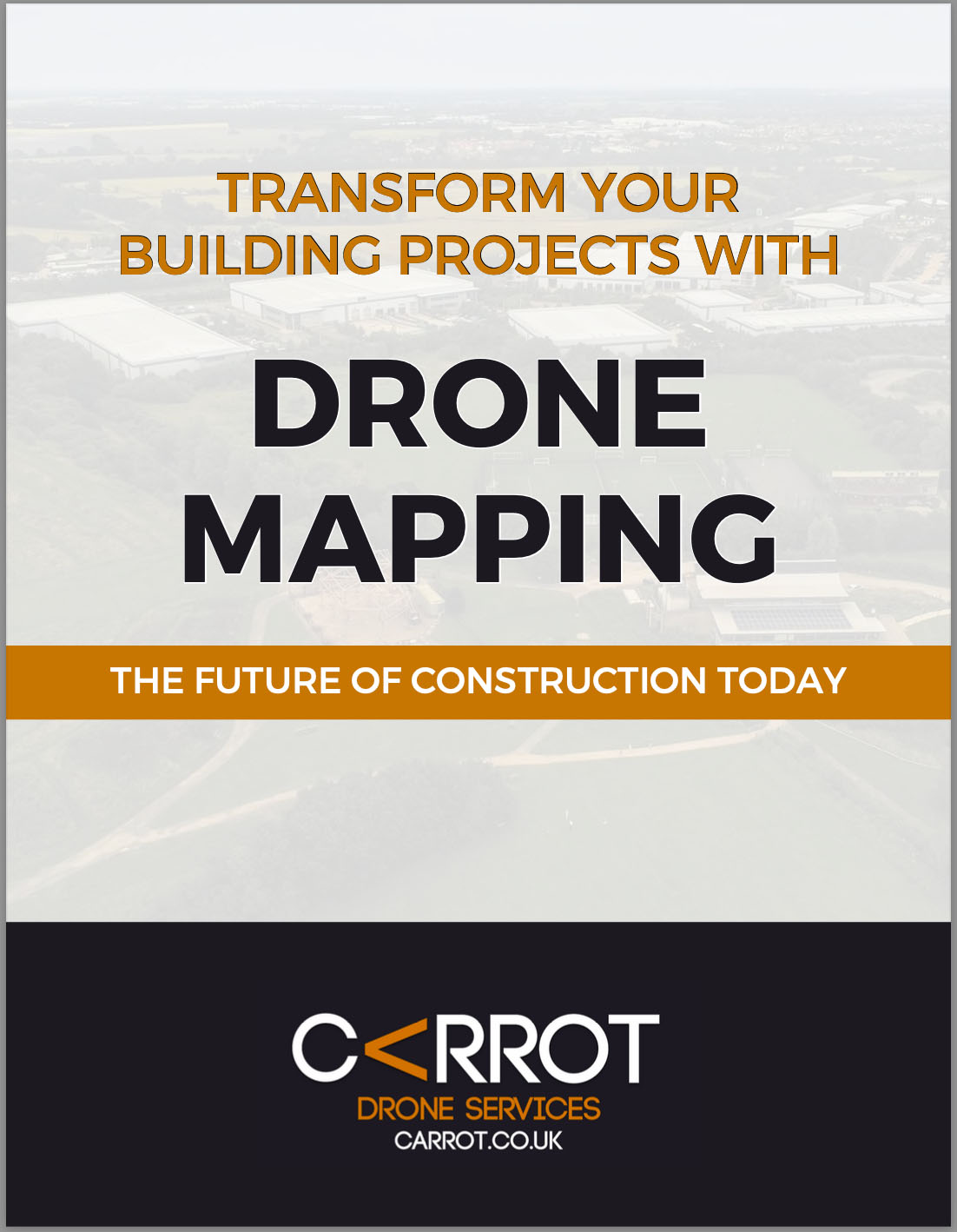Read Time 10 mins
26/04/2023

In recent years, the rapid development of innovative technologies has transformed the way we live and work. Among these advancements, drones and digital twins stand out as particularly groundbreaking, capturing the attention of various industries. As their adoption continues to rise, it becomes increasingly important to understand their unique capabilities and the potential applications that emerge from their synergy. In this blog post, we aim to explore the intersection of drones and digital twins, delving into their combined potential to revolutionize multiple sectors and processes.
Understanding Drones and Digital Twins
Drones: An Overview
- Definition and types of drones: Drones, also known as Unmanned Aerial Vehicles (UAVs) or Unmanned Aircraft Systems (UAS), are remotely piloted or autonomous aircraft that can carry out various tasks without an onboard human pilot. They come in various shapes, sizes, and designs, such as fixed-wing, rotary-wing, and hybrid drones, each with its own advantages and suited applications.
- Key features and capabilities: Drones are equipped with advanced features like GPS, high-resolution cameras, thermal imaging, and sensors to collect data and provide real-time information. They can be programmed to follow specific routes, autonomously navigate, and adapt to changing conditions, making them versatile tools for various tasks.
- Common applications across industries: Drones are used in a wide range of industries, including agriculture, infrastructure inspection, disaster management, surveillance, filmmaking, and delivery services. Their ability to access hard-to-reach locations, gather high-resolution data, and operate in hazardous environments make them invaluable assets in these sectors.
Digital Twins: A Primer
- Definition and concept: A digital twin is a virtual representation of a physical object, system, or process, which is created using real-time data collected from sensors and other sources. This digital counterpart simulates the behavior of its physical counterpart, allowing for analysis, prediction, and optimization of performance under various conditions.
- Components of a digital twin: Digital twins consist of three main components: a data model that captures the structure and properties of the physical object, a set of algorithms and analytics that process the data, and a user interface that visualizes and interacts with the information.
- Benefits and applications: Digital twins offer numerous benefits, such as improved efficiency, reduced operational costs, enhanced decision-making, and accelerated innovation. They are used across various industries, including manufacturing, energy, transportation, and healthcare, for applications like predictive maintenance, product design, and process optimization.
Combining Drones and Digital Twins
Why Drones and Digital Twins Make a Powerful Pair
- Enhanced data collection and analysis: Drones excel at collecting high-quality, real-time data from hard-to-reach or hazardous locations. By integrating this data into digital twins, organizations can create more accurate and dynamic models that enable better understanding, prediction, and optimization of their physical assets.
- Improved decision-making and operational efficiency: Combining drone-collected data with digital twin technology allows organizations to simulate various scenarios and assess the impact of different decisions on their assets. This leads to more informed decision-making, reduced downtime, and increased overall efficiency.
- Synergy in remote monitoring and maintenance: Drones equipped with sensors can perform remote inspections, detect anomalies, and gather critical information. When this data is integrated into digital twins, organizations can proactively address potential issues and optimize maintenance schedules, minimizing disruptions and costs.
Key Applications and Use Cases
- Infrastructure inspection and monitoring: Combining drones and digital twins enables efficient inspection of structures such as bridges, buildings, and power lines. Engineers can analyze the digital models to identify potential weaknesses, assess structural integrity, and plan maintenance activities, thus ensuring safety and reducing costs.
- Agriculture and precision farming: Drones equipped with multispectral cameras can gather data on crop health, soil conditions, and irrigation systems. By integrating this data into digital twins, farmers can optimize crop management, reduce resource waste, and increase yields.
- Environmental monitoring and conservation: Drones can collect data on various environmental parameters, such as air quality, water levels, and vegetation health. Digital twins built with this information can help researchers monitor ecosystem changes, evaluate the impact of human activities, and develop effective conservation strategies.
- Emergency response and disaster management: In emergency situations, drones can quickly gather data on affected areas, while digital twins can simulate the impact of various response strategies. This enables decision-makers to rapidly assess and deploy the most effective interventions, potentially saving lives and resources.
- Smart city development: As urban centers adopt smart city technologies, drones and digital twins can play a crucial role in monitoring infrastructure, traffic, and environmental conditions. This data-driven approach can lead to better urban planning, optimized resource allocation, and improved quality of life for residents.
Challenges and Future Outlook
Technical and Operational Challenges
- Data accuracy and integration: Ensuring the accuracy and reliability of data collected by drones is crucial for effective digital twin implementation. Additionally, integrating data from various sources and formats can be challenging, requiring sophisticated data management and processing techniques.
- Scalability and storage: As the volume of data generated by drones and digital twins grows, organizations must address the challenges related to storage, processing, and analysis. Developing scalable solutions that can handle large amounts of data is essential for the successful adoption of these technologies.
- Connectivity and real-time processing: For optimal performance, drones and digital twins require reliable, high-speed connectivity to transmit and process data in real-time. Overcoming connectivity challenges in remote or congested areas is critical for their effective implementation.
Regulatory and Ethical Considerations
- Privacy and security concerns: The use of drones for data collection raises concerns about privacy and data security. Organizations must adhere to regulations regarding data protection and develop robust security measures to address potential threats.
- Airspace regulations and drone traffic management: As drone usage increases, managing airspace and ensuring safe operation becomes more complex. Regulatory bodies must establish comprehensive guidelines for drone traffic management to mitigate the risk of accidents and conflicts.
- Environmental impact: The widespread use of drones could have an impact on the environment, including noise pollution and wildlife disturbance. Ensuring that drone operations are conducted with minimal environmental impact is crucial for sustainable adoption.
The Future of Drones and Digital Twins
- Technological advancements and integration: As technology continues to evolve, we can expect drones and digital twins to become more sophisticated, with enhanced capabilities and features. This may lead to new applications and increased integration with other emerging technologies, such as artificial intelligence and the Internet of Things (IoT).
- Potential new applications and industries: As drones and digital twins continue to prove their value, new industries may adopt these technologies to address unique challenges and optimize their operations. This could lead to the development of innovative solutions and applications that were previously unimaginable.
- Impact on workforce and job creation: The widespread adoption of drones and digital twins may change the nature of certain jobs, requiring new skills and expertise. At the same time, these technologies have the potential to create new job opportunities in areas like data analysis, drone operation, and digital twin development.
Conclusion
In summary, drones and digital twins have the potential to transform a wide range of industries, offering enhanced data collection, improved decision-making, and increased operational efficiency. To fully unlock their potential, it is vital for stakeholders to invest in research, development, and collaboration, while addressing the technical, operational, and ethical challenges that lie ahead. As technology continues to evolve, we can look forward to witnessing the exciting new applications and opportunities that emerge from the intersection of drones and digital twins.
